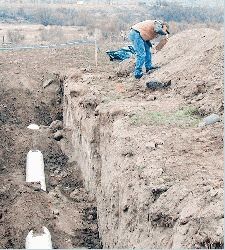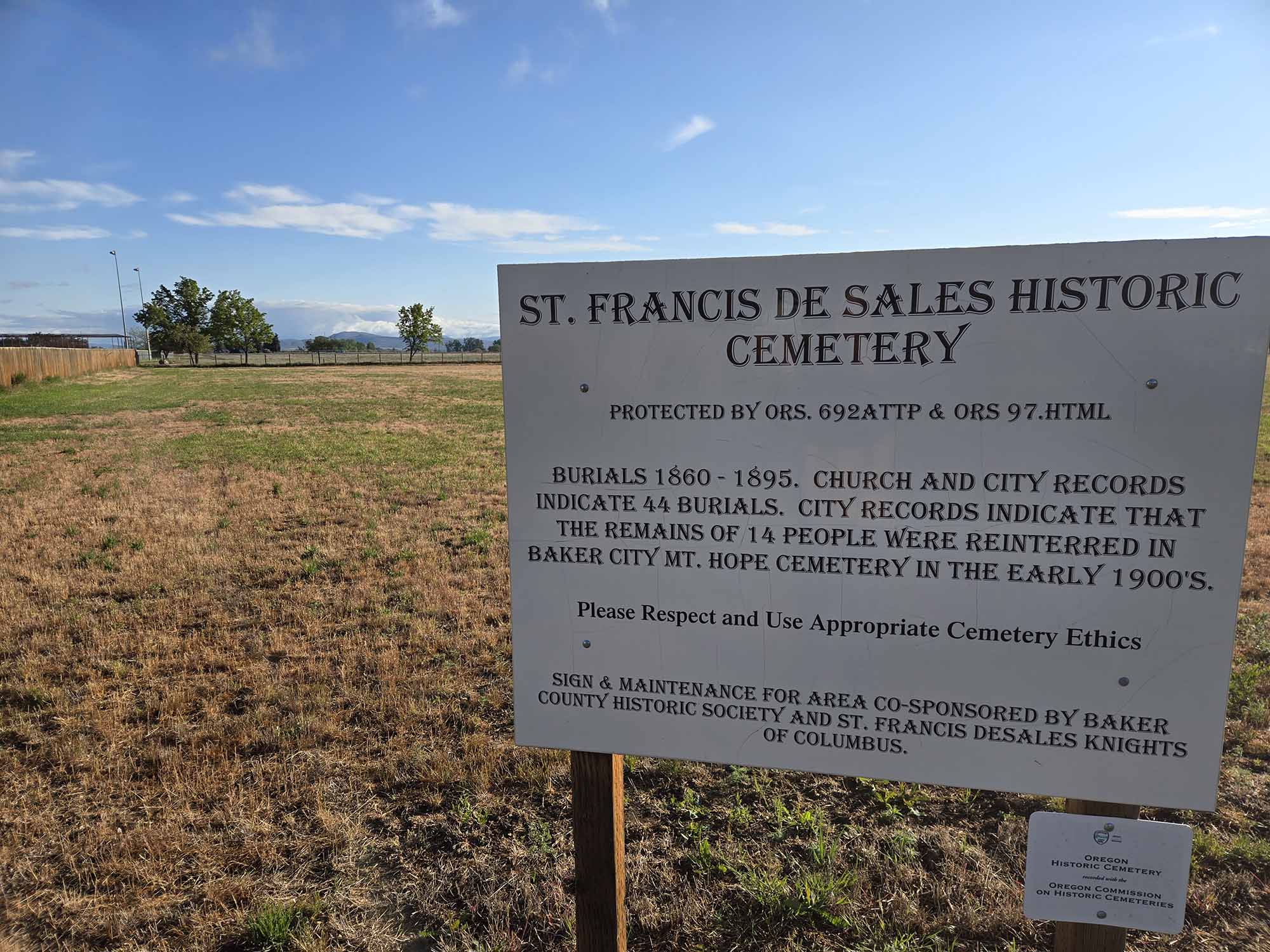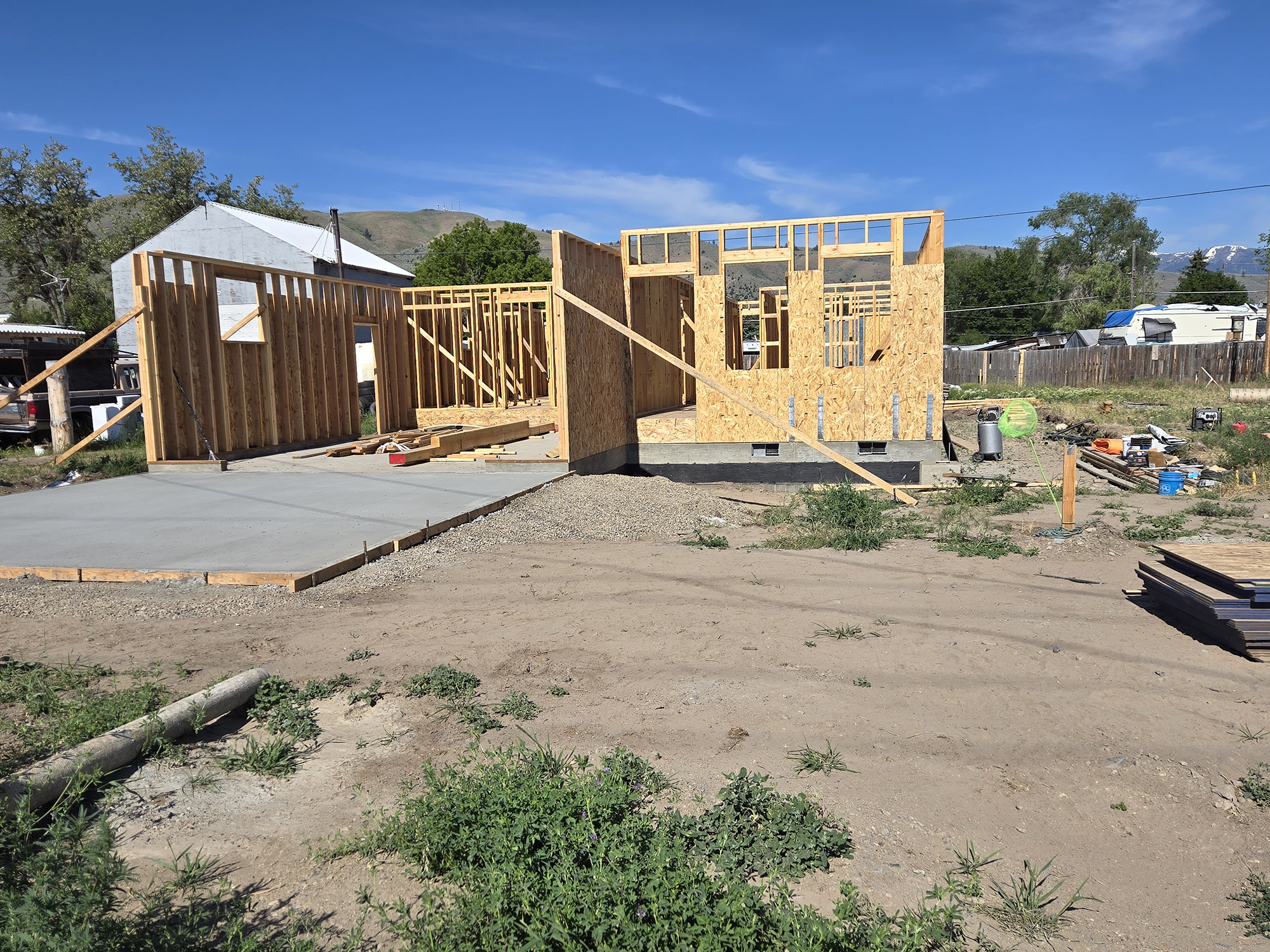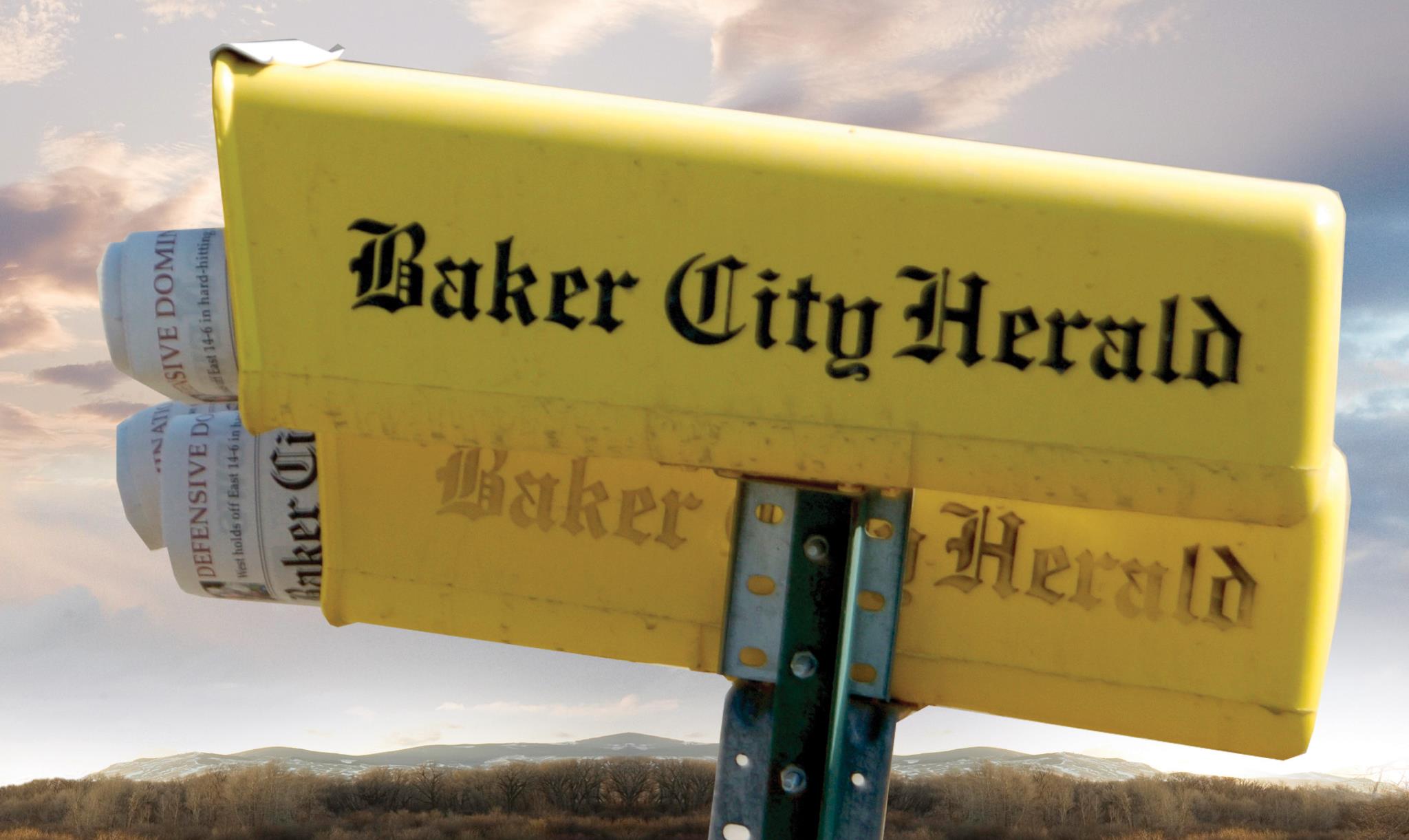Tribes rebury ancient bones
Published 12:00 am Thursday, April 10, 2008

- Archaeologists found human bones in a trench dug on Idaho Power Co.'s Daly Creek Ranch near Richland. The company was replacing an irrigation pipe. (Photo courtesy of the Confederated Tributes of the Umatilla Indian Reservation).
By JAYSON JACOBY
Trending
Baker City Herald
Elders from the Confederated Tribes of the Umatilla Indian Reservation recently reburied centuries-old human bones that an excavation crew found this winter on Idaho Power Co.’s Daly Creek Ranch near Richland.
About 14 people, including Idaho Power archaeologists, attended the reburial ceremony on March 20, said Teara Farrow, who manages the cultural resources protection program for the Umatilla Reservation, which is near Pendleton.
Trending
Daly Creek Ranch is on the south side of the Powder River arm of Brownlee Reservoir.
Farrow said Idaho Power allowed tribal religious leaders to bury the bones near where they were found.
andquot;Our main priority is to get the remains back in the ground in a proper resting place,andquot; she said. andquot;Idaho Power did a very good job in working with the tribes.andquot;
Dennis Lopez, an Idaho Power spokesman at the company’s headquarters in Boise, said the company did not publicize the discovery of the bones because it does not want to entice people to search for artifacts on the ranch.
The property is closed to the public.
andquot;Also our concern is that these are human remains, and we want to maintain a certain level of decorum,andquot; Lopez said.
A tribal osteologist who studied the bones, which included parts of a jawbone and the ulna (one of the bones in the wrist), concluded they are the remains of a man who was probably at least 50 years old when he died, Farrow said.
Most of the bones were fragments so small it wasn’t possible to determine which part of the body they were from.
As is customary, the Umatilla Tribes did not send any bones to a lab for radiocarbon tests to determine their age, she said.
andquot;We don’t believe in destroying any part of the bone,andquot; Farrow said.
However, based on the condition of the bones, the depth at which they lay, and the abundance of stone tool fragments in the area, Idaho Power and tribal officials agreed that the remains were those of an American Indian.
Although Umatilla elders conducted the ceremony, Farrow said it’s possible the man was a member of the Nez Perce tribe.
The Cayuse people, one of three groups that constitute the Confederated Tribes of the Umatilla, sometimes traveled, hunted and camped together, Farrow said.
(The Confederated Tribes’ two other peoples are the Walla Walla and the Umatilla.)
Because American Indians moved so frequently and traveled so far to gather food, they usually buried people where they died, Farrow said. Thus it’s not unusual, she said, for one person to be buried alone.
The Umatilla Tribes usually get at least one or two reports each year, and some years as many as 10, of human remains found on the Tribes’ ceded lands, Farrow said.
The Daly Creek Ranch, a 10,000-acre spread that Idaho Power bought in December 2006, is part of the 6.4 million acres in Northeastern Oregon and Southeastern Washington that the Umatilla tribes ceded to the U.S. government in the 1855 treaty that created the Umatilla Reservation, Farrow said.
In late January an Idaho Power worker found the left section of a jawbone while digging a trench for an irrigation pipe the company is replacing, Farrow said.
Earlier, a company archaeologist had found what’s known as a andquot;lithic scatterandquot; in the area.
Lithic scatters, which lie on the ground surface, usually consist of rock chips and other debris from flint-knapping, the process American Indians used to carve arrowheads, spear points and other hunting tools, Farrow said.
Tribal officials asked Idaho Power to make sure company archaeologists monitored the digging in case the excavator unearthed other artifacts.
Late one afternoon in January an Idaho Power archaeologist who was searching in the trench found the jawbone, Farrow said.
The archaeologist also found several other fragments of human bone.
Idaho Power officials called the Umatilla Reservation and, at the Tribes’ request, stored the bones in a secure place at the ranch, Farrow said.
Some weeks later, after delays due to wintry weather, tribal officials along with Idaho Power archaeologists and other employees, sifted through sorting screens most of the dirt excavated from the trench.
They found, in addition to bone fragments, spear points and arrowheads, one intact and one broken pestil, and the base of a stone mortar.
The archaeologists also identified many pieces of animal bone.
andquot;To us it represented that the site was a camp,andquot; Farrow said.
She reminds people that it is illegal to collect any artifacts, including arrowheads, on public land.
If you find artifacts on private land you own, you can keep one piece, but you can’t dig for others, Farrow said.
If you find what you think is a human bone, Farrow suggests you first call the local sheriff’s office. If the bones are ancient, she urges a call to a tribal office.
andquot;We’re always more than willing to know about sites that haven’t been recorded,andquot; she said.
The Umatilla Tribes also will accept arrowheads and other artifacts that people collected even if the collecting violated the 1979 federal law governing American Indian relics.
Farrow said many people have donated such items to the Umatilla Tribes over the past several years.
The Tribes’ Web site is: www.umatilla.nsn.us/








